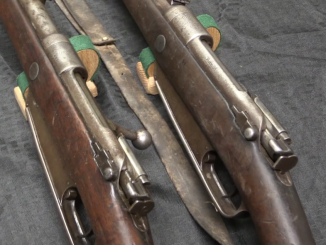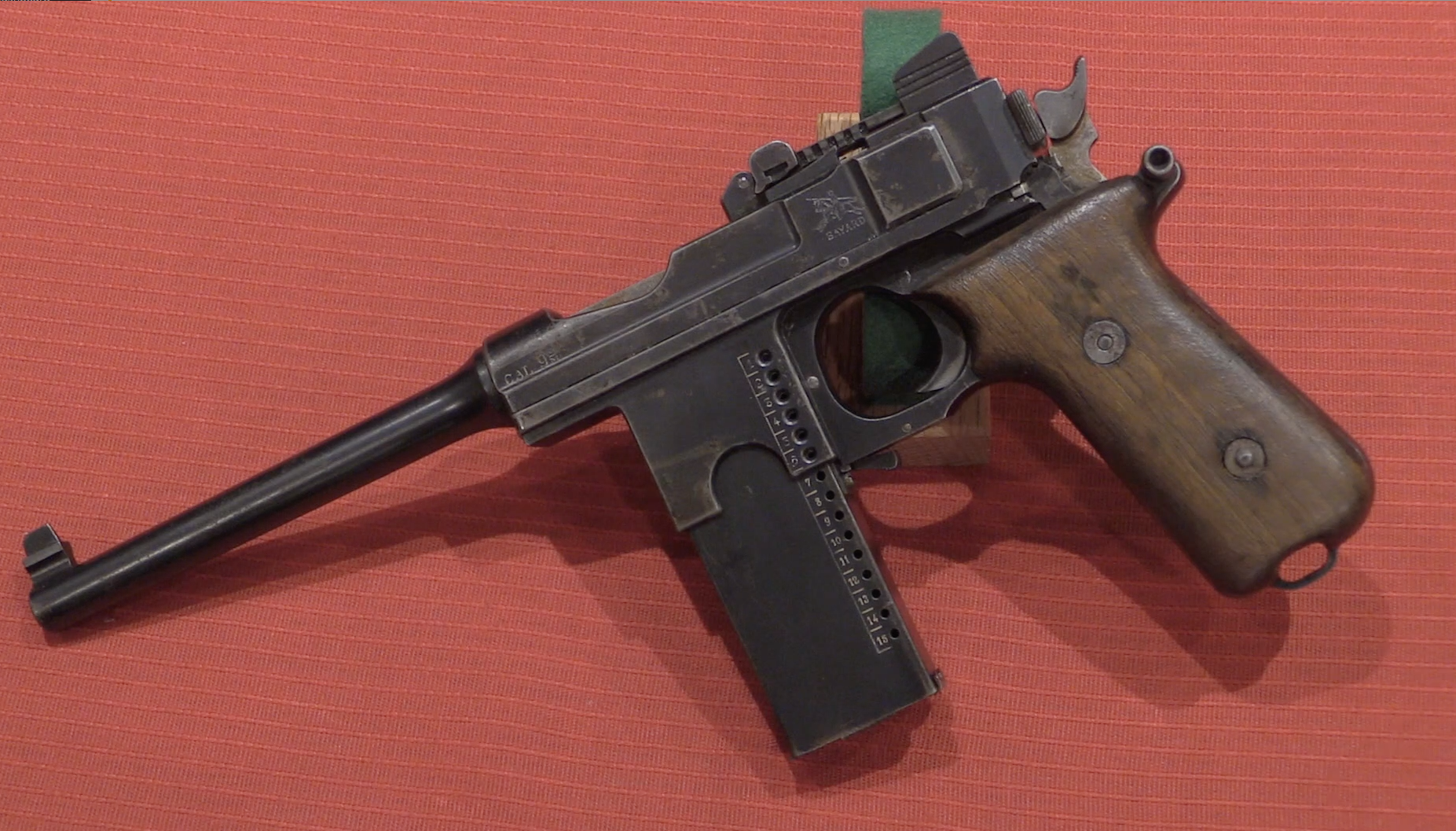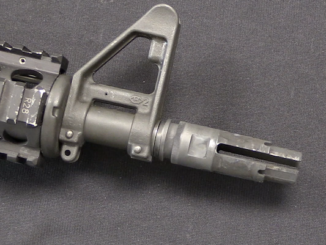As someone who is very interested in the practical handling of old firearms, the idea of gun museums leaves me a bit conflicted. On the one hand, I am absolutely in favor of guns being preserved for posterity, and there is no better environment for that than a museum. On the other hand, once guns go into a museum they tend to be locked permanently behind glass (or worse, packed in crates in a reserve attic or basement) under institutional policies that make it impossible to fire or disassemble them. Museums tend to put guns into stasis – they continue to exist and can be seen, but one can learn little more from them at that point.
When rare and interesting guns are in private collections, they are accessible to far, far fewer people – but the people owners are often much more open to the idea of handling and firing them – and one can learn far more about a gun by actually using it than by simply looking at an example hanging on a wall. It’s a tradeoff, and there are good reasons to look to either option.
Of course, the best possible option would be for a public museum that IS actually willing to shoot parts of its collection. Believe it or not, the best example of that is the British Royal Armouries, which includes the old Pattern Room collection. They have an indoor range facility, and do fire guns from their collections from time to time. In fact, they appear to have recently gotten access to a seriously high-end slow motion camera and put it to use on some interesting guns. Very cool! Have a look:
Lewis (including use of paper confetti to show the ventilation system functioning):
Vickers:
Bergmann MP 18/I (using the Luger snail drum):
Webley-Fosbery automatic revolver:




I do not understand what appears to be two reports for each cartridge fired in the automatic revolver?
Cylinder gap?
It is the air in front of the bullet being pushed out as it leaves the barrel then the report of the expanding gases follows the bullet. That is why it looks like two reports. It is more prominent in handguns as the muzzle velocity is lower.
That’s an excellent Webley Fosbery video – thanks for posting it.
It’s a “grail” gun for me, but despite certain legal provisions making it theoretically possible to get one, I suspect the price is outrageous.
I notice the rounds in the Vickers cloth belt are bouncing all around and some fall out. Is it just because it’s an old belt? Did soldiers have workarounds for this? I thought these guns were famously reliable…
In the days of cloth belts a gun crew included a Loader. In vintage film clips that’s the guy hand feeding the belt up to the feed tray. His primary duty(aside from acting as a human mule ammo bearer)was to monitor the belt as it advanced and when he spotted a loose round, or rounds, he would call out “Hold”,fix the problem, then call out “Clear” (Not “Fire”, which is a command.). When I was in the Army, back in the Mesozoic Era, this was still in the FMs, although I only encountered it because it was a question on the EIB test.
I observe it too; good point for having a loader.
Very interesting sequences. I was fascinated to see that the cumbersome Lewis cooling system actually appears to work. Personally I would never have snapped the bolt on such an old and valuable gun though.
I enjoyed watching the Vickers too, but I just knew it was going to fail to load those two .303 rounds that we hanging out of their loops in the ammunition belt. I doubt any belts for Vickers guns have been manufactured for over 50 years, so maybe this one had got a bit loose over time? Happens to us all.
Just a note on the museum vs individual question. There is a third alternative that is worse than either one, and that is the museum that takes its firearms and welds them into a solid block of metal, sometimes for legal reasons, sometimes for PC “guns are baaad things” idiocy. If you, or someone you know, is thinking of donating a rare or historic firearm to an institution do your due diligence and find out what they will do/have done with other donations. Please!
Hate to say it but The Pattern Room could learn a few lessons from you and your photography. Ken
Pattern room is definitely place to visit (my dream) or Military museum in Koblenz. http://www.vff-wts.de/
However, seeing is one thing, shooting them is for ordinary visitor next to impossible. Luckily we have Ian to do it for us.
Regarding Lewis cooling concept – I remain unconvinced. The paper flakes are moving both front and back; hard to speak of organized pattern.
Yeah, I think smoke would do a better job of showing what is happening.
Flehy hands and a looser grip could leave the shooter with a serious case of Webley bite.
I never knew the Lewis had an open magazine ( we all live and learn). Poor old Chauchat always get berated for this fault ( which people forget it was designed to be an aircraft weapon in the first place).
well Lewis is a bit better since the magazine only opens down, dirt will fall out, and has a slightly more difficult ingress than the Chauchat. the big hit on the Chauchat is more a combination of what faults the gun did have, combined with the faults introduced by the failed attempt to rechamber the rifle to .30-06.
at least that is what I’ve been told
Louis Chauchat’s operating principle was sound, but the execution of the plan and manufacturing shortcuts carried out by subcontractors turned his gun into a near-failure (and yes, Joshua, the predecessors of the Chauchat we all hate were used in aircraft by the back-seat guys). Perhaps if production quality standards were actually enforced (maybe by shooting the bum who stuffed government money into his pockets and spammed the armory with crappy weapons) and the system redesigned to account for overheating and foreign object damage, Chauchat’s name would not be dragged through the mud of the Western Front.
Possible changes apart from the (ridiculously obviously ill-fitting) magazine design:
1. Have the gun be longer and better configured so that the recoiling receiver tube won’t whack the user in the face
2. Have fewer moving parts (obviously) and better tolerances in manufacturing (and perhaps shoot the slackers)
3. Change the ammunition to something like 8X57 IS or 7X57 commercial Mauser, adjust the system accordingly
4. Get rid of the fore grip or move it somewhere else
Any other ideas apart from killing Louis Chauchat via time-travelling DeLorean?
Good vid of the Lewis gun and showing the flow of cooling air passing from front to rear…on aircraft, the cooling sleeve was dispensed with as the slipstream and high altitude made it superfluous (to say nothing of the weight reduction. the twisting of the cloth belt in the Maxim/Vickers shows the necessity for a loader/assistant gunner to prevent feeding problems
Chris:
On the Lewis, I believe the air flow is meant to be from back to front; the muzzle blast is meant to draw cool air from the rear over the fins and out at the front.
I’m going to this museum in a couple of weeks. I used to work with the RSAF back in the ’80s. (Royal Small Arms Factory at Enfield).
I’m impressed by how stable the various parts on the Lewis are, compared to many other firearms we have seen in slow motion.
Anyone notice the typo on the video: “machine fun.” Paging Doctor Freud!
Webley-Foster bite? Such scars should be worn as a badge of honor. Any large-handed fool can be hurt by the slide of a Walther PP or the ring hammer of a Browning High Power, but only a chosen few will ever have Webley-Foster bite.
And why is the machine gunner’s face obscured? Can it be that the anti-gun attitude in Great Britain has gone so far that there is fear or shame involved in being the person shooting these historical guns? I truly hope not.
Bart Noir
Yes, yes, I botched the reference to the Grande Puissance. In proper English, or at least product marketing English of the 1930s, it is correctly called the Hi-Power.
Bart Noir
Who is chastened.
I particularly like how Fosbery managed to keep the pistol looking like a conventional Webley .455